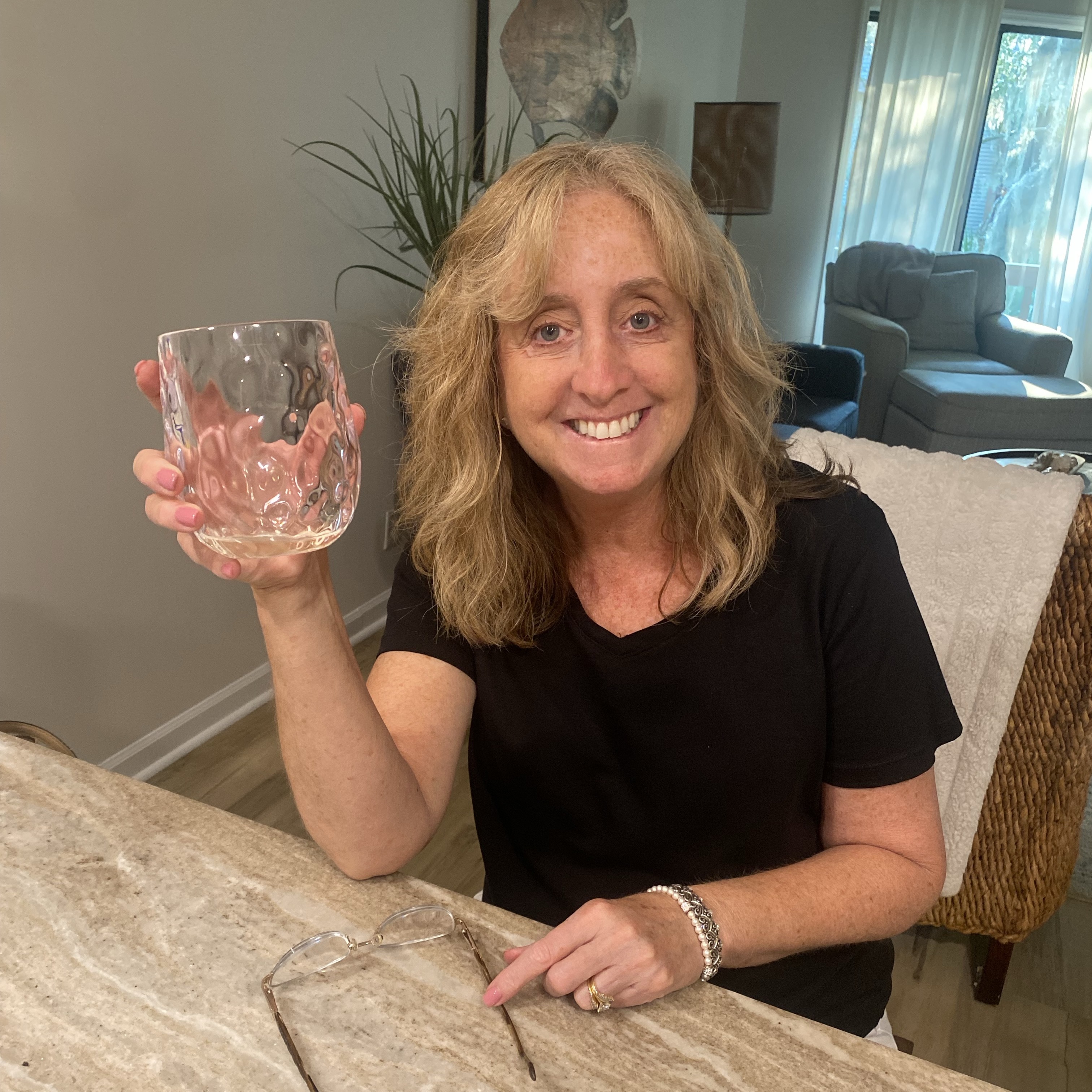Château D'yquem
Krug
Brut Rosé Champagne Blend


Sine Qua Non
Mr. K The Straw Man Brander Vineyard Sémillon 2003
Melts in your mouth! On par with D'Yquem. Yes, I said it — 11 years ago

Penfolds
Bin 28 Kalimna South Australia Shiraz 2010
Blackberry coulis black cherry liqueur max Schubert hired in the 1938's as a winemaker he had to leave to fight ww2 and he was first chef winemaker in 1948 1950 he went to Bordeaux. Black licorice spice he visited chateau d'yquem and hated it but loved the reds extended maceration barrel fermentation in 1951 he creates the first vintage of grange Cabernet Sauvignon and Shiraz but had no can so cab so the first two grange were all Shiraz they continued to plant more Cabernet and created two granges a de years later one from Shiraz and one from Cabernet. Has lovely complexity on he nose jammy and ripe black berry fruit. Very silky smooth and velvety. Kalimna was a single vineyard owned by penfolds in 1943. D equates this vineyard to vosne romance interesting. 178 acres they produce all ranges of penfolds wines from this vineyard first made this wine in 1958 as a single vineyard wine very big and chewy but it still has elegance like all of penfolds wines red and black fruit. The 1996 is very soft and elegant on the palate very elegant with a bit of materized but still has some fruit — 11 years ago
Taylor Fladgate
Vintage Port Blend 1963
1963 Taylor Fladgate Port. Wine charity dinner bought by H&C S, hosted at the house. Dessert course. Drank alongside '75 Chateau d'Yquem. This was delicious w the salted caramel. Easier than the d'Yquem to sip without food. Great! — 9 years ago
W. & J. Graham's
Vintage Port Blend 1963
1963 Graham's Vintage Port. Dessert wine to cap off K charity wine dinner. Drank this alongside the '75 d'Yquem. Interesting to compare a red dessert wine right alongside a white one. This was less rich and chewy in the mouth- had a lightness in texture, which was offset by a more cloying sweetness. Raisins, caramel, even a little cinnamon. Noted that people were able to consume more of this wine than the d'Yquem. — 9 years ago
J Vandermeulen Decanniere Ostende
Chateau d'Yquem Sauternes Sémillon-Sauvignon Blanc Blend 1921
Needs time. — 9 years ago
BenRiach Distillery Company
The BenRiach Heart of Speyside 16 Years Single Malt Scotch Whiskey 1992
I'm not really a whiskey lover, but this one, aged in barrels of Château d'Yquem (!), stole my heart! — 10 years ago
Tokaj Hétszőlő
Late Harvest Tokaji Hárslevelu 2013
Banging late harvest from the "D'yquem" of Hungary! — 10 years ago
Château Guiraud
Sauternes Sémillon-Sauvignon Blanc Blend 1988
Producteurs Plaimont
Pacherenc du Vic-Bilh Saint-Martin White Blend 2010
Looks like chateau d'Yquem. Could drink it all day long- reminiscent of flavor of chateau as well — 9 years ago
Château Rabaud-Promis
Sauternes Sauvignon Blanc Sémillon 1997
Flight 5 - A Sweet Ending
The last flight of the evening was a flight of 3 Sauternes, including the great Chateau d'Yquem. Rabaud-Promis and Raymond-Lafon were the only ones showing unfortunately as the d'Yquem was corked enough that we knew it and thus wasn't judged. Both the RL and RP were a blend of 80-20 Semillon and Sauvignon Blanc, the traditional Sauternes blend. The difference besides the vintage was the oak maturation. RL gets 3 years in new oak while the RP sees only 12-14 months in new oak.
The Raymond-Lafon 1996 showed the 3 full years of new oak and a full on sweet and dry attack of honey, candied peach, and marmalade all accented by the telltale pungency of the fungus botrytis cinerea. Custard and creamy notes delivered here as well amping up the flavor and body perception, with a clean and dry finish.
The RP showed an elegant and lighter attack because of the lighter vintage and less oak used in the maturation process. More notes of juicy stony fruits and sweet citrus showed here. This was a nice contrast to the RL.
Botrytis cinerea, aka "Noble Rot", gives the Sauternes wines a musky, but pure and sweet texture. The fungus evaporates the water in a healthy grape, thus naturally concentrating the juice and flavor in the grape. — 9 years ago
Château Suduiraut
Sauternes Sémillon-Sauvignon Blanc Blend 2013
Suduirat, just north of d'Yquem. Youthful as all hell. Slight note of new leather with a mango and macadamias and a dash of wasabi. Great concentration with killer acid — 9 years ago
Château Suduiraut
Castelnau de Suduiraut Sauternes Sémillion Sauvignon Blanc Blend 2009
4th of July, dinner at bb's... They said this vineyard is next door to d'yquem. Very similar taste, lots of honey. — 10 years ago
Alois Kracher
No. 2 Nouvelle Vague Trockenbeerenauslese Zweigelt 2005
D'Yquem mixed with Iced Tea - and I mean that in a good way. — 11 years ago
István Szepsy
6 Puttonyos Aszú Tokaji Furmint Blend 1999
Poor man's d'yquem.
Had 1999. 500ml bottle.
Creamy and effervescent with a two minute finish. Divine.
Paid 80usd.
— 11 years ago








Somm David T
Independent Sommelier/Wine Educator
There are certain occasions that call for Krug Rosé. So, HBTM! The bottle was corked in the summer of 2014. It’s a blend of 45 reserve wines with the oldest being from 2007 and the youngest 2002. This is why I think Champagne Makers are some of the most talented people making wine. They are constantly blending up to 100 plus wines to bring that bottle to bottle and year to year branded flavor of consistency. On the nose; red & pink spring flowers, cherries, strawberries, watermelon, black cherry, black raspberries, notes of blood orange citrus, baked bread, soft volcanic mineral and elegant chalkiness. The palate is always ridiculously delicate. Micro bubbles, silky rich texture with beautiful soft acidity. The palate fruits are similar to the nose; rich & ripe cherries, strawberries watermelon, black cherry, black raspberries, notes of blood orange citrus with hints of marmalade. Red & pink spring flowers, baguette crust, soft powdery minerals that give the palate a slight sting and super powdery chalkiness done just right. The finish is beautifully rich, textured, revealing itself in layers and lasts minutes. Photos of; Founder Joseph Krug, House of Krug, Winemaker Eric Lebel, Krug’s Clos du Mesnil, a small plot of 1.85 hectares of Chardonnay...one of the world’s greatest vineyards and their salon tasting room. Producer history & notes...Krug was founded by Joseph Krug in 1853. They are based in Reims, the main city in France’s Champagne region. It is one of the famous Champagne houses that formed part of the Grande Marques. Today the house is majority owned by the multinational conglomerate LVMH, which owns Moët Hennessy, Louis Vuitton S.A. and who’s wine producer portfolio includes other well known wine brands such as; Moët & Chandon, Veuve Clicquot, Château d'Yquem, Ruinart & Cheval Blanc, Dom Perignon and many others. Despite LVMH's majority ownership, the family is still actively involved in all the key decisions of the house but does not manage the day-to-day operations. Joseph Krug was born Johann-Joseph Krug, a butcher’s son, in Mainz, on the Rhine in 1800 when the city was part of the Napoleonic Empire. Having dispensed with the name Johann, he left Mainz in 1824 and in 1834 moved on to Paris. Germans were in demand in France as accountants and bookkeepers. So, Joseph joined Champagne Jacquesson in Châlons-sur-Marne. He spent eight years with Jacquesson. His work took him beyond accountancy. He went around Europe testing the market and assessing criticism from wine sellers and customers. He learned about composition and taste so that by 1840 he already seemed to have been blending Champagne for at least one other house. In 1841, he married Emma-Anne Jaunay. The daughter of a French hotelier based in London’s Leicester Square. The following year their son Paul Krug was born. In 1842 he moved to Reims and following a year later, Krug et Cie was founded with his partner, Hyppolite de Vivès. Joseph was fluent in French, English and German and even spoke some Russian, putting the company in position to exploit key overseas markets. Joseph died in 1866 and was succeeded by his son Paul Krug, who had been trained by his father to takeover. Joseph under the supervision of Paul, Krug was established as a Grande Marque. By the 1880s the prestige of Krug was acknowledged in the United Kingdom and became the primary overseas market for Champagne. In 1866, the House moved into Rue Coquebert, in Reims as it remains. After Paul’s death in 1910, he was succeeded by his son, Joseph Krug II. However, during World War I Joseph II was taken prisoner and his wife Jeanne played a key role in the House at a time when the Western Front divided the region between the Allies and the Germans. After the war, Joseph II’s slow recovery led to his nephew Jean Seydoux becoming joint manager in 1924. In that decade, the Krug 1926 and 1928 vintages were created, which have been considered by critics to be amongst the greatest Champagnes. Lawyer and wine writer Maurice Healey declared “Krug” the king of all Champagnes. Further, “that the 1928 Krug was the best wine made in the present century.” By the mid-1930s, Paul Krug II, the son of Joseph II, was active in the business and would become head of the House from 1959 to 1977. His father died in 1967, by which time he was, according to Patrick Forbes, “one of the most popular and respected figures in the Champagne district.” In 1962 Henri Krug, the son of Paul II, joined the management, as did his brother Remi three years later. Their arrival was followed by a series of innovations, including extensions in the range of Champagnes. In 1979, for the first time, a graduate winemaker joined the House. In January 1999, the House became part of LVMH and by 2007, the brothers, while remaining on the tasting committee, had stepped down from day-to-day responsibilities. In 2009 Olivier Krug, the son of Henri, became House Director. At harvest, Krug grapes are pressed close to their plots with the first juice kept for 24 hours in a vat prepared for the fermentation stage. The pressing from each plot is vinified separately. A pressing contains 4,000 kilos of grapes and yields 20.5 hectolitres of first juice (cuvée), which is poured into twelve oak casks chosen at random. Once fermentation is complete, the eleventh and twelfth casks are used to top up the other ten casks in order to protect the new wines from oxidation. For fifteen days, each cask is topped up with wine from the same plot. Krug uses small 205 liter oak casks tailor-made from trees that are more than two centuries old in the forests of Hautes Futaies in Central France. The average age of Krug oak casks is 20 years. They are retired after approximately 40 years of use. The wines remain in the casks for several weeks. During this period, clarification occurs naturally from the cool temperature of the cellar given the coming winter, as does a micro-oxygenation process from the use of natural containers, making the wine more resistant to oxygen over time. Finally, between December and January, the wine is drawn off into small stainless-steel vats. From here, depending on the decisions of Krug’s tasting committee, the wines will either contribute to that year’s assemblage or be stored in steel vats in the House’s library of 150 reserve wines to be used in the blend of a future Krug Grande Cuvée and or Krug Rosé. — 8 years ago